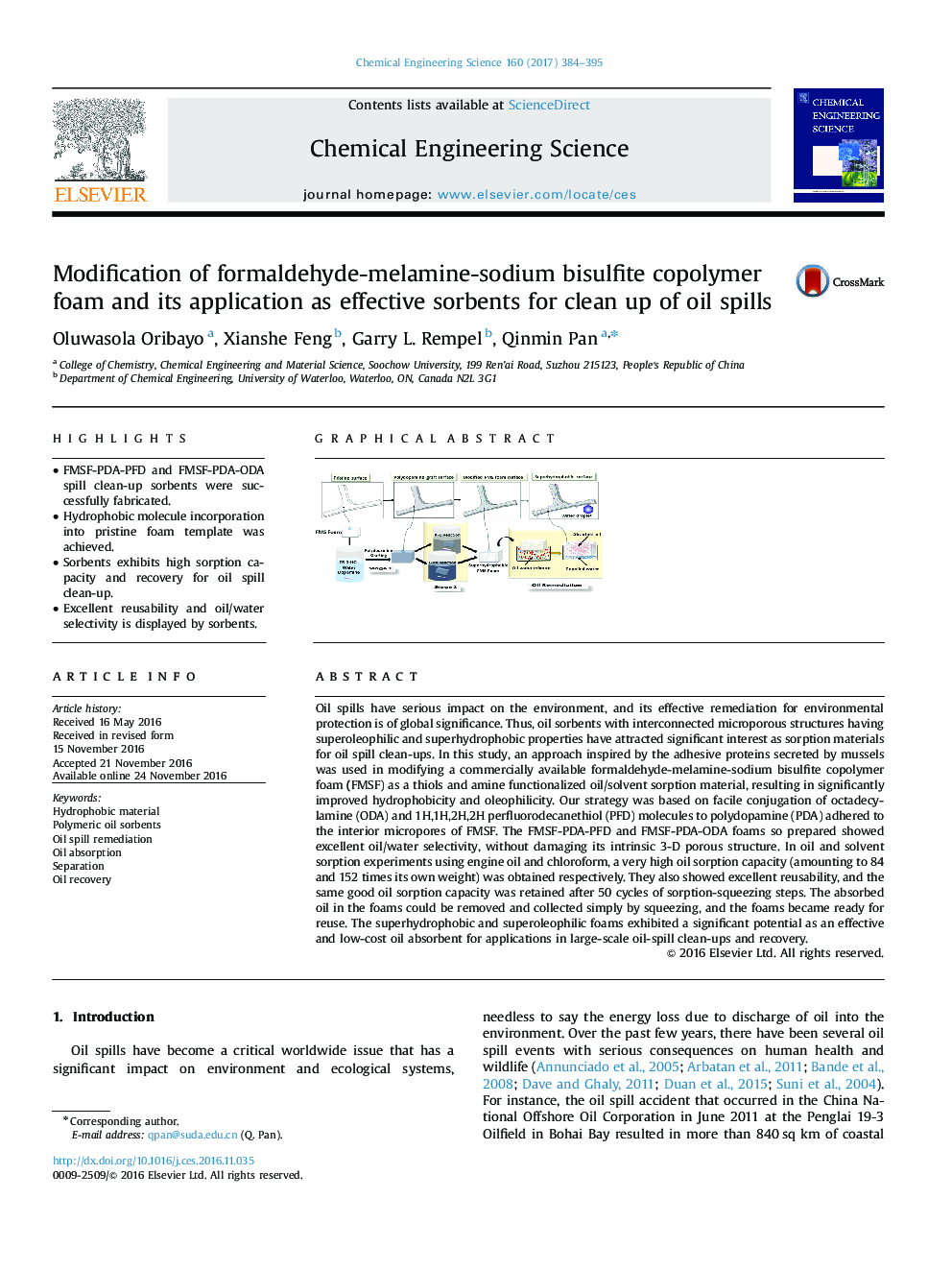| کد مقاله | کد نشریه | سال انتشار | مقاله انگلیسی | نسخه تمام متن |
|---|---|---|---|---|
| 6467690 | 1423259 | 2017 | 12 صفحه PDF | دانلود رایگان |
- FMSF-PDA-PFD and FMSF-PDA-ODA spill clean-up sorbents were successfully fabricated.
- Hydrophobic molecule incorporation into pristine foam template was achieved.
- Sorbents exhibits high sorption capacity and recovery for oil spill clean-up.
- Excellent reusability and oil/water selectivity is displayed by sorbents.
Oil spills have serious impact on the environment, and its effective remediation for environmental protection is of global significance. Thus, oil sorbents with interconnected microporous structures having superoleophilic and superhydrophobic properties have attracted significant interest as sorption materials for oil spill clean-ups. In this study, an approach inspired by the adhesive proteins secreted by mussels was used in modifying a commercially available formaldehyde-melamine-sodium bisulfite copolymer foam (FMSF) as a thiols and amine functionalized oil/solvent sorption material, resulting in significantly improved hydrophobicity and oleophilicity. Our strategy was based on facile conjugation of octadecylamine (ODA) and 1H,1H,2H,2H perfluorodecanethiol (PFD) molecules to polydopamine (PDA) adhered to the interior micropores of FMSF. The FMSF-PDA-PFD and FMSF-PDA-ODA foams so prepared showed excellent oil/water selectivity, without damaging its intrinsic 3-D porous structure. In oil and solvent sorption experiments using engine oil and chloroform, a very high oil sorption capacity (amounting to 84 and 152 times its own weight) was obtained respectively. They also showed excellent reusability, and the same good oil sorption capacity was retained after 50 cycles of sorption-squeezing steps. The absorbed oil in the foams could be removed and collected simply by squeezing, and the foams became ready for reuse. The superhydrophobic and superoleophilic foams exhibited a significant potential as an effective and low-cost oil absorbent for applications in large-scale oil-spill clean-ups and recovery.
278
Journal: Chemical Engineering Science - Volume 160, 16 March 2017, Pages 384-395
